Greek mythology contains some of the Western World’s most celebrated myths and legends. As with most other mythologies belonging to ancient civilizations, the Greeks used their myths as a way to explain the dangerous world around them. More than that though, they acted as a method to get for creating a more unified Greek culture across the diverse lands populated by ethnic Greeks. Familiarity with their surroundings and more importantly, each other, was encouraged through myths.
While tales of god-like heroes are celebrated and undoubtedly more appealing to the masses, the myths simultaneously act as subtle explanations as to why things are the way they are. Myths worked as a means to explain the origin of certain social institutions, or why the political system was the way it was. Similarly, these stories would explain things as mundane as the activity of everyday life or as earth-shaking as how the cosmos came to be.
Greek mythology encouraged the emergence of Hellenism, which is a term used to describe the mainly Greek culture that dominated the ancient world in the final millennium of the Common Era (1,000 – 1 BCE).
READ MORE: Ancient Civilizations Timeline: The Complete List from Aboriginals to Incans
In addition to a massive pantheon of Greek gods and goddesses, Greek mythology also contains a number of real-life characters, and the stories of these characters and gods mix together to make a complex system of understanding the world that still has relevance today.
Table of Contents
What is Greek Mythology?
Greek mythology is a collection of ancient stories and myths that originated in ancient Greece. These myths were created by the ancient Greeks to explain the world around them, understand the nature of gods and humans, and explore various aspects of human life and behavior. Greek mythology was an integral part of Greek religion and culture, and it has had a significant influence on literature, art, and philosophy throughout history.
The myths were passed down orally through generations before being written down by ancient Greek authors. The major sources of Greek mythology include works by poets such as Homer and Hesiod, as well as various historical and philosophical writings.
The Ancient Greek Pantheon

As it is, the religion of ancient Greece is complex. Polytheism was enthusiastically practiced on a national level. Within polytheistic worship came the emergence of cults and their own unique practices. In light of this, it is worth mentioning that the Greek pantheon is notorious for being one of the most elaborate genealogies ever.
The consensus is that the ancient Greeks worshiped an estimated 3,000 gods in all. This includes spirits and minor gods that were more vague forces of nature than actual beings (the breeze, light, etc). However, when considering the Potamoi and Oceanid offspring of Oceanus and Tethys, and the planetary brood of Astraeus, the estimate of 3,000 may be significantly higher.
After all, the poet Homer has noted countless gods and goddesses to have assembled at Zeus’ behest in the Iliad. All save for Oceanus arrived, including infinite nymphs and infinite rivers. Such an account lends to the idea that many scholars observed: that the pantheon was bursting at the seams, so full that not all names could be reasonably recorded.
READ MORE: Greek Gods and Goddesses: The Entire Pantheon and Family Tree
The Olympians

The Olympian gods are oftentimes incorrectly cited to be the sole gods worshiped by the ancient Greeks. Lone worship of the Olympian gods is known as dodekatheism. Although undoubtedly important deities, the 12 Olympians are certainly not the only Greek gods that were worshiped.
These powerful beings ruled from high up on Mount Olympus after a 10-year war known as the Titanomachy. Known as ouranic gods, the Olympian gods were thought to be the ones that had the most immediate effect on the lives of the ancient Greeks. They directly impacted crop yields, relationships, and weather phenomena.
From a mythological standpoint, the Olympians are unique. More specifically, they stand out when compared to gods and goddesses from other surrounding, flourishing cultures, such as the Romans or Egyptians. Much of this has to do with the humanization assigned to them in Homer’s works, Iliad and Odyssey. Unbefore given the complexities of human emotions and desires, both Iliad and Odyssey explored a side of the gods that was not previously known.
The works of Homer adapted great gods from beloved stories and made them more human: they chose favorites, suffered loss, tasted defeat, and loved fiercely. The humanity given to Olympians allowed the Greeks to gain a better understanding of their mythology. Highlighting the newfound humanness meant that the common man could see themselves in the position of the gods and goddesses that they revered.
The Olympian gods and goddesses at the helm of the Greek pantheon include…
Chthonic Deities

Another collection of deities that were worshiped in ancient Greece was the chthonic gods and goddesses. This means they belonged to the earth. Generally, these would include denizens of the Underworld or deities associated with agriculture.
READ MORE: 10 Gods of Death and the Underworld From Around the World
In mythology, the Underworld is described as having multiple entrances. More often than not, these entrances would be intricate systems of caves that the souls of the dead would traverse. Some of the supposed entrances exist today in Cape Matapan, at the Necromanteion of Acheron, and in ancient Rome’s Lacus Curtius.
Described as gloomy, damp, and full of swirling mist, the Greek Underworld was an unforgiving place where the souls of the dead awaited reincarnation. As a no-man’s-land in countless myths, those Underworld gods were certainly the stuff of nightmares. Of the notable Immortals that call the underside of earth home, there’s the King and Queen of the Dead, the god of sleep, goddesses of vengeance, and the god of death. There’s even a goddess of witchcraft and a frightening ferryman!
Other Greek Gods
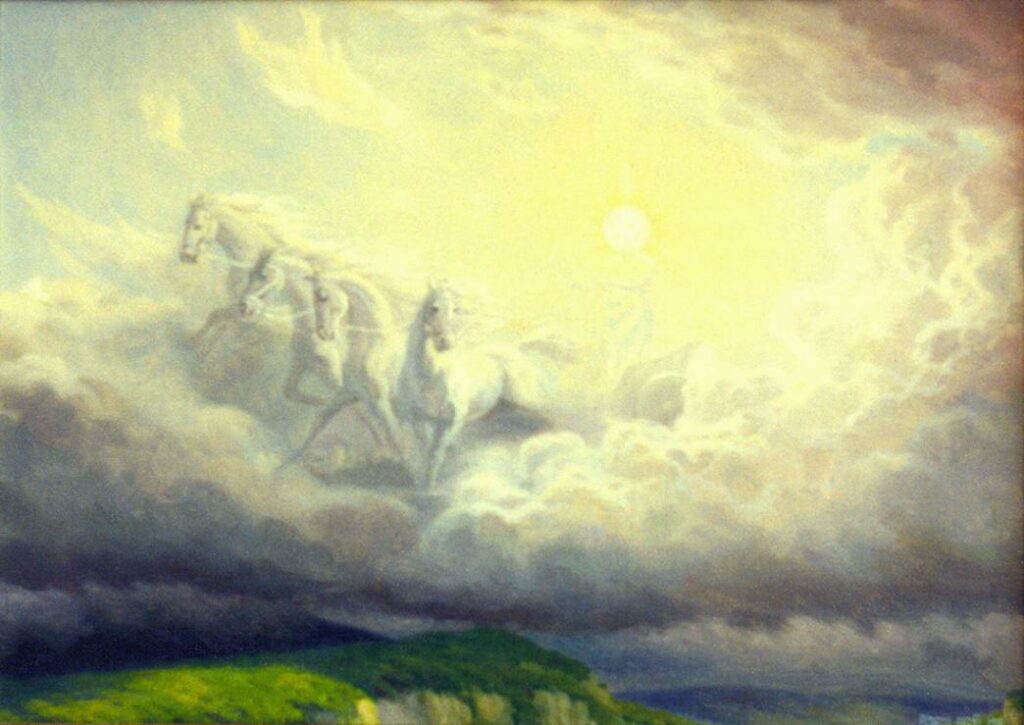
Of course, there are other Greek gods and goddesses in mythology outside of the Olympian gods and the more familiar chthonic deities. These gods are plentiful and powerful, with many grouped together based on their realms of influence. A prime example of this are the Potamoi or the gods of rivers. Each river has its own god that oversees it.
Different regions of Greece and each city-state would have its own divine hierarchy. Sure, the Olympians are still a central focus in many places, but that doesn’t mean that a minor god can’t hold more importance. More often than not, a city god would take priority over other Greek gods since they were thought to have a more immediate impact on the welfare of civilians. A similar trend occurred further south with Egyptian gods, where a local divinity would be combined with a god that had a wider influence to promote unity; whether through declaring one to be an aspect of another or through marriage.
Unfortunately, it will be incredibly difficult to list all gods that were revered in Greek mythology. A few are as follows:
- Adonis
- Asclepius
- Echo
- Eros
- Helios
- Hygeia
- Iris
- Leto
- Metis
- Nemesis
- Pan
- Psyche
- Selene
- The Anemoi
- The Astra Planeta
- The Fates
- The Graces
- The Horae
- The Muses
- The Potamoi
- The Seasons
- Tyche
Primordial Gods

Entities that are considered to be primordial are thought to have been present at the beginning of time. In Greek mythology, these primeval gods are at the start of an exceedingly complicated family tree.
As they are, the primordial deities are not a part of any major myths, save for one. Hesiod’s Theogony describes that after Gaia (Earth) emerged from the darkness of Chaos, she “bore first…starry Sky…she brought forth vast mountains, lovely haunts…Nymphs who dwell along the woodland hills. She too bore…Sea, rushing with the swollen stream, the Pontos…without delightsome love.” Therefore, the primeval Greek gods play an important role in the creation of the world. Specifically, Gaia is the Mother Goddess from which all life is born.
More often than not, these elder gods are overshadowed by their newer, better-known counterparts. This does not take away their validity as gods, nor does it diminish their strength. After all, there is only one creature that strikes fear into the deathless gods: Nyx, goddess of primeval night.
Titans
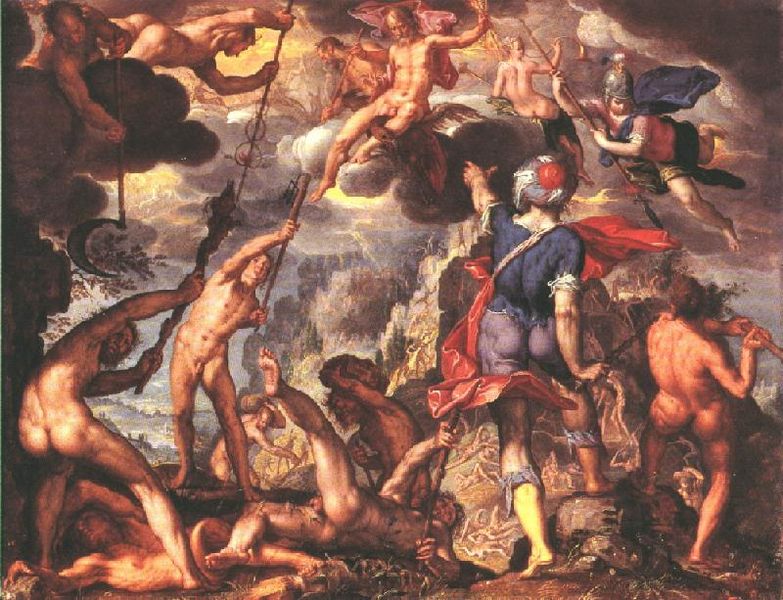
The Titan gods were the predecessors to the Olympians. The 12 Titans were the children of Gaia and her consort, Uranus. Although not as reviled by their father as their Hecatonchiere and Cyclopes siblings, they were tolerated. For years they walked on eggshells until the youngest of the Titan brood, Cronus, staged a coup with Gaia’s support. In stark contrast, the eldest Titan, Oceanus, refused to participate.
The Titans ruled during the Golden Age of man until Cronus’ offspring waged war against their tyrannical father in an event known as the Titanomachy.
Religious Practices of Greek Mythology

Religious practices of the ancient Greeks revolved around stringent polytheism. The reverence of multiple pagan gods meant that their calendars were jam-packed with festivals, sacrifices, and other rituals. At the same time, political institutions were no strangers to religious participation. In fact, many of them had extensive influence on Greek religious practices.
Most religious practices that we are aware of today have older origins. Both Mycenaean and Minoan sites from the Bronze Age provide insight into the worship of pre-Hellenistic gods. Whereas few of these names are familiar – Zeus, Poseidon, Hera, Erinys, and Dionysos – others like Ipemedeja and Driomios are lost to history.
Festivals
Festivals were one of the most popular methods of celebrating the gods in the Greek world. On that note, not all festivals were to honor the gods and goddesses of Greek myth. Further festivals are held to celebrate women, children, family, citizens, and harvests. So, while the Greeks of eld may have loved a good party, it was certainly a party with a purpose.
Festivals varied in duration and activity, with the grandest festival celebrated across Greece being Dionysia. The festival of Dionysus was staged in Athens and lasted five jubilant days. Nevertheless, some festivals were smaller affairs. Markers of a successful festival – regardless of size – included public feasting, offerings, processions, and live performances.
Sacrifices
As you could probably guess, ancient Greece was no stranger to sacrifices. While the prevalence of human sacrifices is debated, animal sacrifices were certainly participated in. Commonly, larger livestock was sacrificed like oxen, sheep, and goats. The most impressive sacrifice was thought to be a hecatomb or a sacrifice of one hundred cattle.
On top of the importance being placed on the number of animals sacrificed, the color of the animal also mattered. In many cultures, white was a color associated with sky gods, since the color symbolized Aether. Comparatively, black was specially reserved for gods tied to the earth, with the color representing fertile soil. Therefore, white animals were sacrificed to Olympians, and black animals were sacrificed to earthen deities.
If human sacrifices did occur, most scholars agree that they were to honor chthonic gods and spirits and human sacrifices were incredibly rare. Sacrifices of this caliber would be only performed under specific, demanding circumstances. Furthermore, they did not progress past Greece’s Archaic Period (650-480 BCE).
Lastly, living creatures were not the lone things to be sacrificed to the gods. Libations – a sacrificial serving of wine – were offered to the gods, most notably to Hestia and Hermes. Significant food, such as cereals, grains, and beans, were also offered to the gods outside of select meats.

Cults and Mysteries
Cults were a major part of Greek religious practices. Many of these were official and recognized by the populace. By the same token, a branch of cults known as mystery cults grew in popularity, where members were shrouded in secrecy and initiations were scarcely held.
For example, Orphism revolved around the works of the legendary bard Orpheus and the practitioners valued death-defying characters (literally) above all others. Meanwhile, the Eleusinian Mysteries were staged in honor of Demeter and Persephone annually. The uniting factor of mystery cults was the type of afterlife they could offer participants. They were oftentimes focused on death and rebirth.
The Many Stories and Myths of Greek Mythology
Many myths around the world are etiological and begin as an oral tradition. They work to explain the natural world and its phenomena. More than that, though, they provide an insight into the collective experience of mankind. Tales of sorrow and despair are intermingled with stories of love, triumph, and comradery. Without myths, the world would be far more frightening and feel a lot more lonely.
Such is true for the mythology of ancient Greece. The civilization is celebrated for its heroes and epics; for its stories of adventure and the poetic way they answer some of mankind’s most burning questions.
Now, just what myth was the most prized above all is hard to say. Prometheus’ theft of the sacred flame made him a national hero, but the value of a myth could be completely dictated by a region. After all, Athenians may celebrate their city’s founding story, but that doesn’t mean neighboring Thebes held it to the same standard.
The Creation Myth
When looking at all of the Greek myths known today, it is easy to get overwhelmed. From the constantly overlapping family trees to the frequent run-ins with a monstrosity or two, things certainly get confusing. (Like, really? Another dragon? Dear Gods!)
Brushing aside the confusion, the most important myth relevant in Greek mythology is the creation of the world. The Theogony by the epic poet Hesiod is the fullest account of early Greek myths and other stories, including their creation myth. Following tradition, Hesiod beseeches the Muses and honors them first and foremost. Then, he delves into the creation of the first-ever gods.
In Greek mythology, Gaia was the first to be created, and from her, all life was born. She emerged from Chaos and bore countless children, either through parthenogenesis or coupling with one of her sons. The existence of a Mother Goddess is a shared belief across various cultures’ creation myths. In particular, the role belonging to an earth goddess is purported in numerous Indo-European cultures that emerged around the same time as the ancient Greeks.
The presence of a goddess being the progenitor of all life is reflected in Roman mythology – which derived inspiration for some of its myths from Hellenism – as well as in Norse, Anatolian, and Indo-Aryan myths. Therefore, the myth of creation in Greek mythology can indicate them being a matriarchal society at their earliest establishment. Archaeological evidence discovered at Minoan sites prior to the mainland Mycenaean invasion further supports this theory.
READ MORE: Norse Gods and Goddesses: The Deities of Old Norse Mythology
The Ages of Man
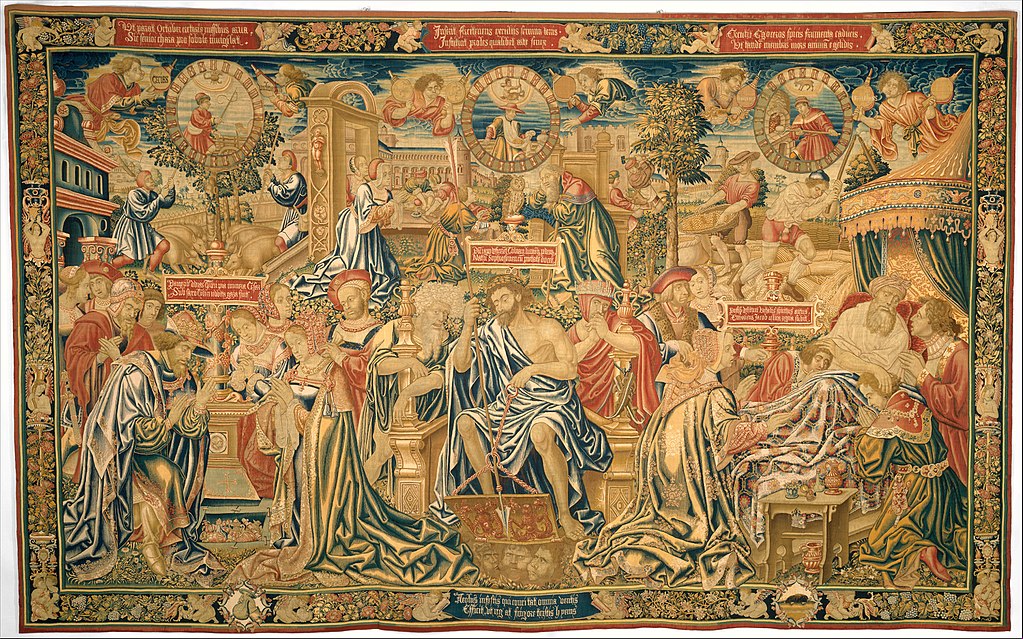
The Ages of Man is a belief that was first posited by Hesiod in his Works and Days. At this point in time, Hesiod had also written Theogony. Both pieces are crucial to understanding the genealogies of the gods and the order of succession of divine rulers.
Within Works and Days, Hesiod establishes five different Ages of Man. These are the Golden, Silver, Bronze, Heroic, and Iron Ages respectively. From Hesiod’s perspective, he lived during the fifth age, the age of Iron, where the gods have forsaken man to suffer their wicked ways. The Golden Age of Man is when the Titans ruled: a period of time when mankind knew no strife.
Of the Ages of Man, the Heroic Age stands out as uniquely Greek. During this period that encompassed upwards of six generations, heroes came out of the woodwork. The start of the Heroic Age is around the time of the Argonautica, with the events of the Trojan War signifying the end.
In the Roman poet Ovid’s Metamorphoses, only four Ages of Man exist, these being Golden, Silver, Bronze, and Iron. In both interpretations, the foremost is generally regarded as ideal. Prosperous and bountiful, mankind lived close to the gods during the Golden Age. The Ages of Man in Roman mythology is a testament to the profound impact Greek myths had on the Roman Empire.
Heroes of Ancient Greek Mythology

The heroes of ancient Greece are reflections of both mankind’s potential and mankind’s failures. They had admirable traits but were still prone to falters and mistakes. More importantly, heroes were the epitome of what the Greeks believed it meant to be human. It must be a coincidence that many heroes in epic legends are simultaneously demigods.
Boy, do the Greeks love their demigods.
These beings, also recorded as hemitheos or “partial gods,” are born from a union of a mortal and a god. There are countless demigods that exist according to myth. Actions that seem superhuman were often attributed to one’s (oftentimes suspected) divine parentage. On another hand, great deeds performed by a mortal were not always done by a demigod, though much of their success hinged on divine influence.
Across the Greek world, these heroes gained traction with the masses. They may have only existed in myth, but that didn’t stop the emergence of localized Hero cults. Many of these cults were inspired by characters in Homeric epics whom Mycenaean Greeks viewed as their ancestors. However, reverence of the dead – especially deceased forefathers – was not unheard of pre-Homer and wholly participated in.
In all, the defining difference between ancestor worship and Hero cults is that Hero cults were civically practiced. Meanwhile, worship of dead ancestors was usually restricted to the family unit. Over time Hero cults developed into the worship of local heroes rather than national ones. Hero cults began to tow a dangerous line between standard religious practice and exalting mankind as if they were divinities themselves.
Below is a small list of the most well-known Greek heroes:
- Achilles
- Aeneas
- Bellerophon
- Castor and Pollux (the Dioscuri)
- Daedalus
- Heracles
- Minos
- Odysseus
- Orpheus
- Perseus
- Theseus
Mythical Creatures
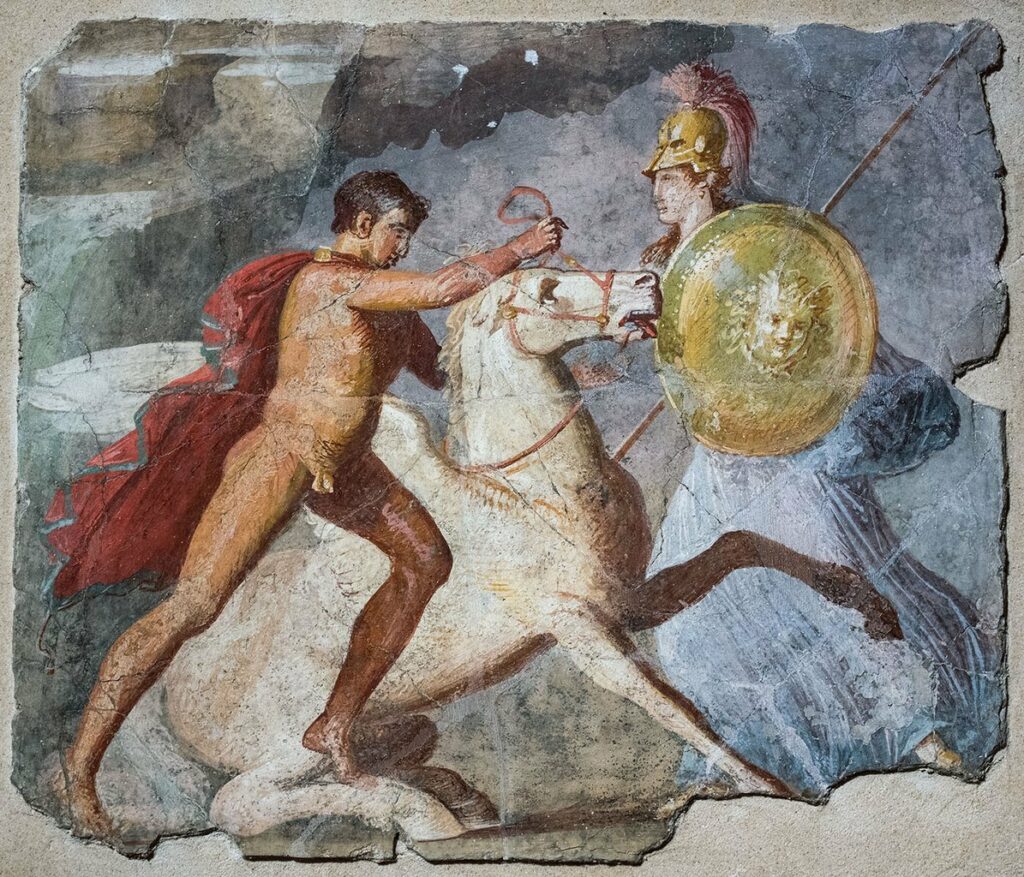
Mythical creatures remain some of the most intriguing facets of Greek myth. Some helped further explain geography or a frightening event. Other creatures were simply there to be contrasted against a hero, whether morally or physically, and pose a challenge.
Unique to ancient Greek culture, the following beings were thought to be tangible, existing in a veil between worlds:
- Centaurs
- Cerebus
- Cyclopes
- Daimons
- Gigantes
- Hecatoncheires
- Nymphs
- Satyrs
- Pegasus
- The Amazons
- The Minotaur
- The Phorcides
Greek Monsters
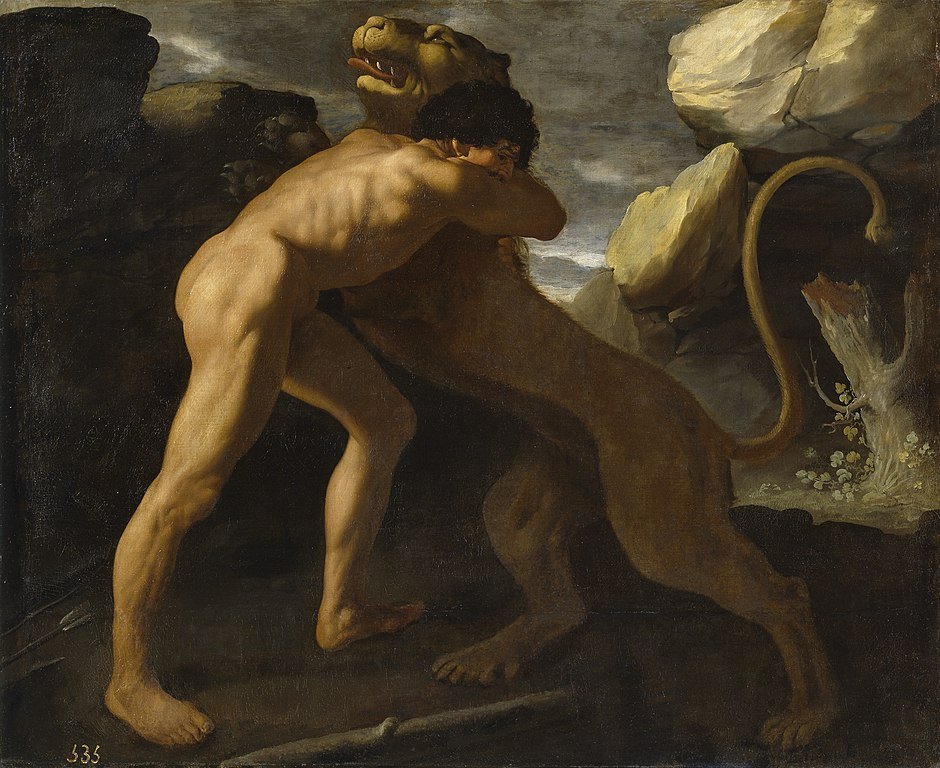
Greek mythology has a ton of monsters. They range from a giant, multi-headed serpent that can spit acid and bleed poison to a seriously rowdy boar. Monsters in ancient Greece acted as much as a warning to mankind as they acted as a roadblock in the machinations of Greek heroes.
As they were, monsters signified chaos. They were an uncontrollable element that was incredibly difficult to overcome, if not close to impossible. They threw a wrench in plans and made attaining something desirable a huge challenge. Whether these monsters represented a dangerous trait, risky behavior, a natural disaster, or the consequences of one’s actions depended upon the story and its overall message.
Some of the most famous monsters were unique plagues beset upon heroes, while others maintained their folklore origins. In the cases of many of the following monsters, they are both bestial and anthropomorphic. They contrast fiercely against the semi-divine beings they are often pitted against, thus highlighting their senseless brutality and frightening facades.
- Cetus
- Charybdis
- Chimera
- Echidna
- Empusa
- Kampe
- Lamia
- Python
- Scylla
- The Colchian Dragon
- The Erymanthian Boar
- The Gorgons
- The Harpies
- The Lernaean Hydra
- The Mares of Diomedes
- The Nemean Lion
- The Sirens
- The Stymphalian Birds
- Typhon
Legendary Items
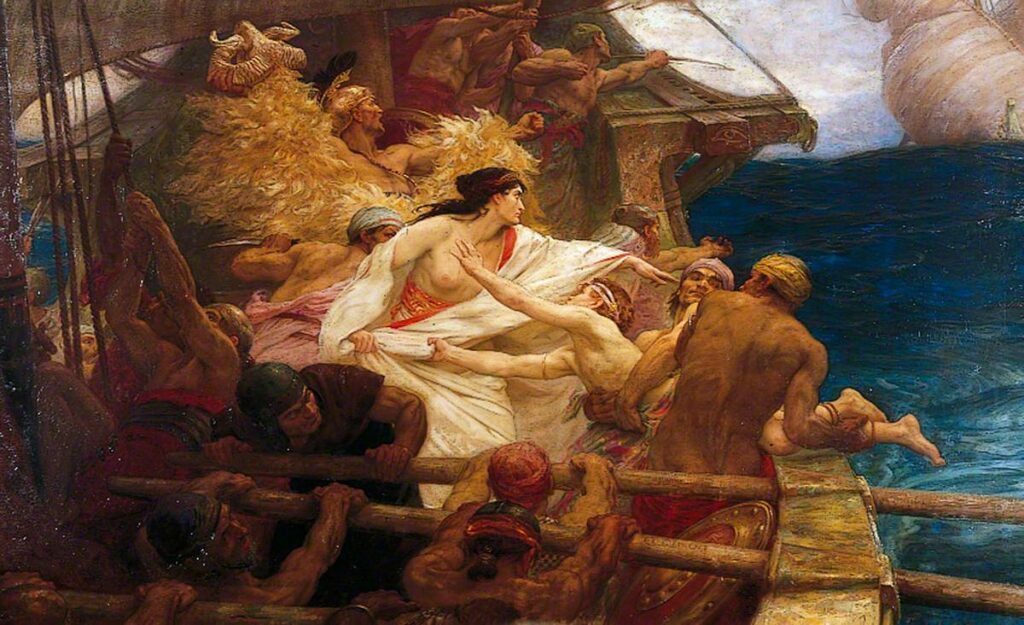
Much of the time, legendary items in Greek mythology are things that can have a direct impact on a story. Legendary items function as plot devices. For example, the constant suffering of the Royal House of Thebes starts to make a lot more sense when a cursed necklace is involved. Likewise, it is easy to pinpoint all of mankind’s woes in a single box.
The existence of these items from Greek myth is undoubtedly steeped in legend, with few being wielded by the gods:
- Adamantine
- Ambrosia
- Hades’ Helm of Invisibility
- Pandora’s Box
- Poseidon’s Trident
- Hermes’ Staff
- The Aegis
- The Apples of the Hesperides
- The Caduceus
- The Golden Apple of Discord
- The Golden Fleece
- The Necklace of Harmonia
- Zeus’ Lightning
Famous Plays Connected to Greek Mythology
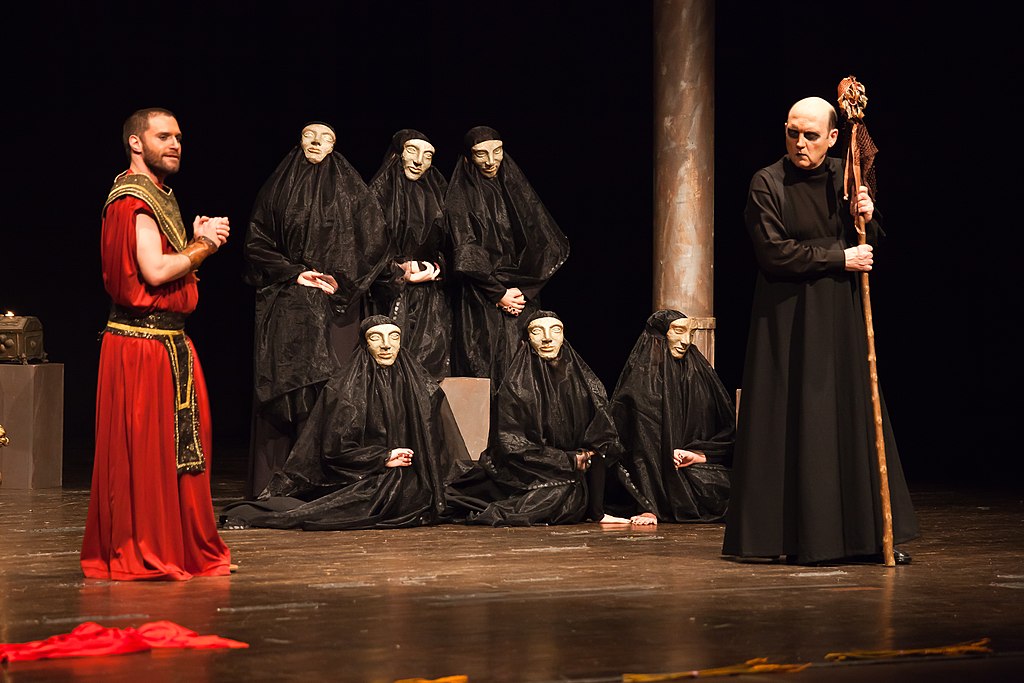
Originally, plays were performed during religious festivals to honor Dionysus, the god of wine and fertility. As an expression of oral tradition, the fabulous Greek plays were once humble lyrical performances of epic poetry. Greek theaters reached their peak between the 5th and 3rd centuries BCE, with the performances of tragedies, comedies, and satyr plays. Thousands of spectators would come to see the show and prisoners would be freed momentarily to attend performances.
Alone, epic poetry is known for its drawn-out narrative that follows extreme acts of heroism from an individual – or, in some cases, a group. Most of the time, the protagonists interact with gods or other mythological creatures, those of whom offer aid or hindrance to the protagonist.
The most famous Greek plays are references to already familiar myths. They acted to give greater insight into an event or speak of the playwright’s own prevailing thoughts, feelings, or interpretations of a well-known myth:
- Antigone
- Iphigenia in Tauris
- Oedipus Rex
- Prometheus Bound
- The Bacchae
- The Frogs
- The Odipodea
- The Oresteia
- The Trojan Women
Famous Artwork Featuring Greek Mythology
The rich art history of ancient Greece leans heavily on Greek myths. A majority of the most famous surviving ancient art from Greece includes friezes, vase paintings, mosaics, murals, and statues (or Roman reconstructions of statues). Most of these great works portray famed mythological events, such as Theseus and the Minotaur or the many trials of Homer’s Odyssey.
Countless mosaics have been found across what was then the Greek world: images of the Titans Oceanus and Tethys were commonplace in bathhouses and washrooms; the serpentine Medusa stared down household guests; the Graces danced in foyers. Thanks to the Romans, many Classical statues survived through recasts.
Art was a means to communicate. As it captured the gods at their highest and portrayed heroes as achieving the unachievable, art for the ancient Greeks was both fantastical and idealistic.
Famous Literature Involving Greek Mythology
Much of the literature that dominated ancient Greece began as a written account of oral traditions. Although Greek literature spanned numerous genres, many of the most cherished works were those that helped bring about a heightened understanding of the world and – more importantly – the gods.
As a consequence, Hesiod’s Theogony became the first written version of Greek cosmology and the backbone of Greek theological studies. Theogony is regarded as the fullest account of early Greek myths. Meanwhile, other praised works included Iliad and Odyssey, two epic poems written by Homer around the 8th century BCE.
- Argonautica
- Bibliotheca
- Iliad and Odyssey
- The Epic Cycle (The Trojan Cycle)
- The Homeric Hymns
- The Orphic Hymns
In Popular Media: Greek Mythology in Modern Film and Television
There are countless media that have been developed over the years that have closed in on Greek mythology. The events of Homer’s tales and various other mythological scenes have inspired generations of artists. Much as oral traditions inspired Greek playwrights, Greek myth had struck inspiration in the hearts of today’s screenwriters.
Modern media developed have included retellings, reinterpretations of, or homages to specific myths, legends, lore, and histories. While the Labors of Heracles has been a fan-favorite, it is impossible to dismiss the value placed on other tales of derring-do, such as the trials of Perseus, the Trojan War, and the fantastic adventures of Jason and the Argonauts.